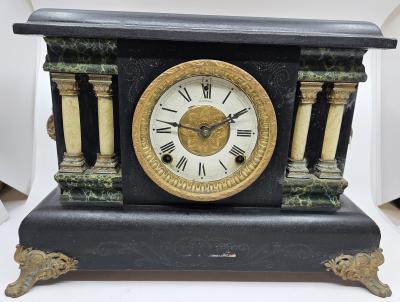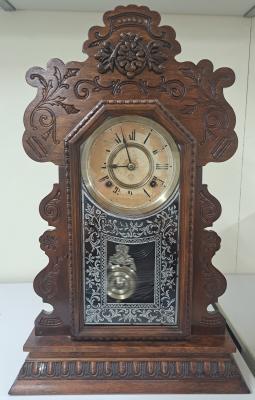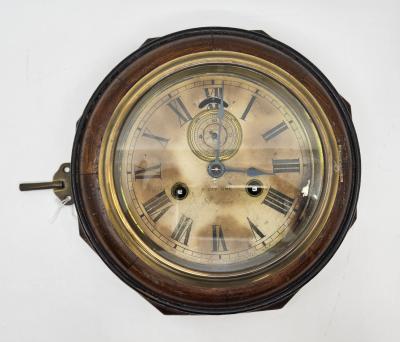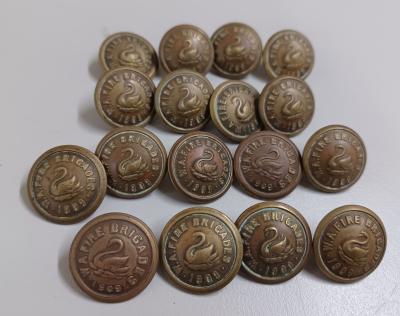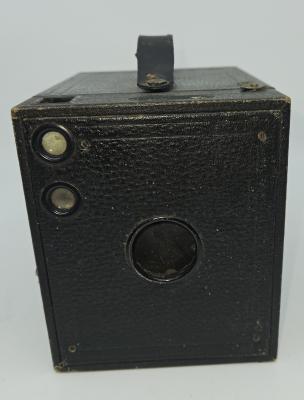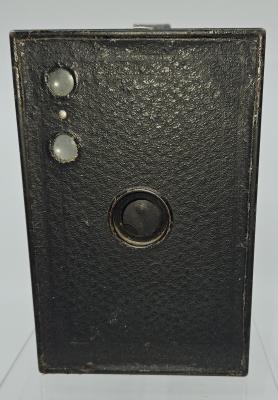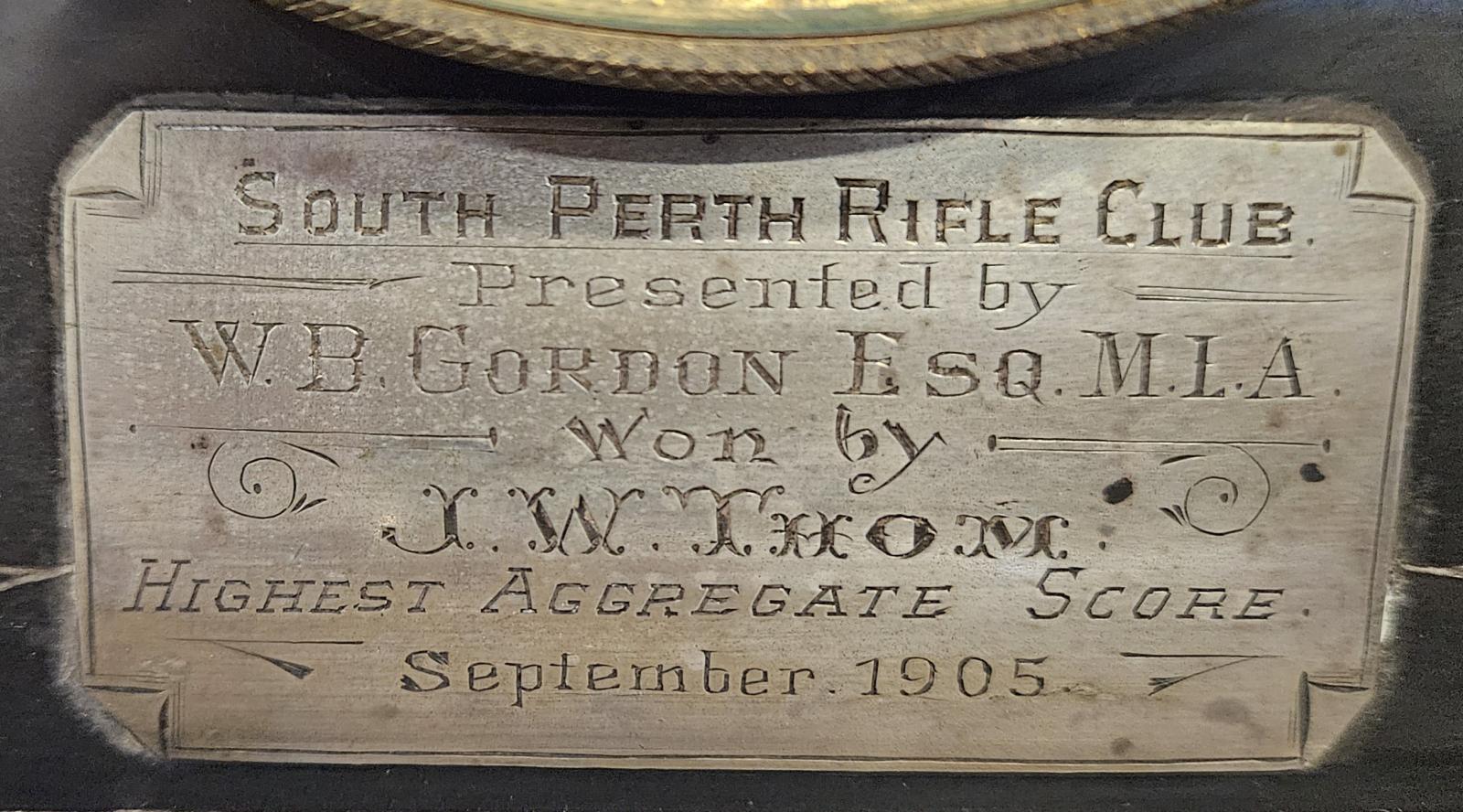Ansonia Marble Clock
Black with Rosa Portugues marble inlay:
Black Apex Roof, scribed with oak, maple and small flowers supporting countryside hunting scene showing a man, a hunting dog, various trees, and a castle carvings:
Base black with oak, marble and small flower scribed along the front:
White clock face trimmed with gold painted gilt, showing black Roman numerals inside in a Glass Casing with oak, maple and small flower scribed on the four corners:
Decorated with 2 sets of 3 black pillared pavilions on each side of the clock:
Above the base there are 2 x Rose Portugues marble pillars, inlaid with black marble at the bottom.
The Ansonia Clock Company was a clock manufacturing business founded by metal dealer Anson Green Phelps who formed the Ansonia Brass Company in 1844 to allow the expansion into clock supply. In 1850 he formed the Ansonia Clock Company along with clockmakers, Theodore Terry and Franklin C. Andrews in Bristol, Connecticut upon which the company relocated to Ansonia, Connecticut.
In 1877 a factory was purchased in Brooklyn, New York and clockmaker Henry J. Davies joined the company as a joint founder. In 1880 the factory burnt down, and an extended factory rebuilt in 1881 which had the capacity to exceed the Connecticut factory which closed in 1883.
By 1914 the Company was producing 440 different clock models however due to fierce competition by 1920 the number of models were down to 136, then 47 by 1927. Despite selling the Brooklyn factory in 1926 and much of the timekeeping machinery and tooling in 1929, they were unable to stem the inevitable decline and finally closed in Ansonia in 2006 after 155 years of operation.
https://en.wikipedia.org/wiki/Ansonia_Clock_Company
Details
Details
Manufactured by Ansonia Clock Co New York United States of America printed on white clock face.
Presented by
WB Gordon Eq. M.L.A.
Won By JW. Thom
Highest Aggregate Score
September 1905
1905 Kings Cup Prize for riffle shooting.
Presented to J.W. Thom.
(Perth Rifle Club formed 1903.)
South Perth Rifle Club
The 1905 shoot probably took place on the Kings Park range.
More items like this
Other items from Busselton Historical Society
- WA Fire Brigades - Brass Buttons 1909
- CAMERA - ANASTIGMAT MODEL
- CAMERA - NO.3 BROWNIE
- Keys - Miscellaneous
- Padlock & Key - Railway
- Railway Carriage KEY
- Rubber Stamp - "Station Master"
- Camera - Brownie No. 2A
- RAILWAY TRUCK SEAL
- Railway Carriage Door HANDLE
- Souvenir - Busselton Tea Rooms plate and jug
- WAGR Plate - Refreshment Service
